#sapsali
Explore tagged Tumblr posts
Text
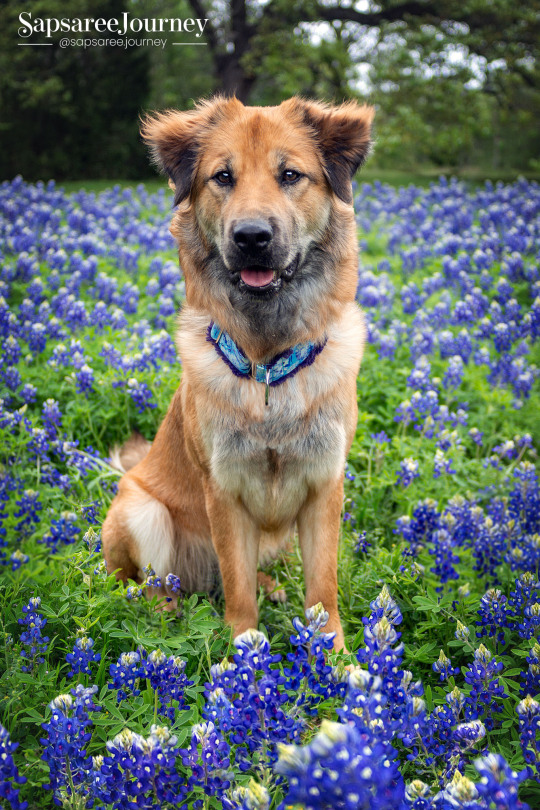
Obligatory bluebonnet photo! I got a few others, but obviously I had to spend too much time making One Good Edit. ™️
#journey the sapsaree#sapsaree#sapsali#sapsalgae#sapsal dog#sapsal#primitive dog#rare dog breed#rare dog#korean sapsali#korean sapsaree#삽살개#삽살이#단모삽살개#bluebonnets#dog#dog photography
103 notes
·
View notes
Text







it/its lesbian sapsali dog and it/its gay norwegian elkhound
#pride icons#my icons#icons#dogs#dog icon#dog icons#sapsali#sapsaree#norwegian elkhound#elkhound#lesbian#gay#it its#it/its#it its lesbian#it its gay#it/its lesbian#it/its gay
1 note
·
View note
Note
Well I'll absolutely still brush your hair in my lap that just makes it way more master and pet coded.
I'll brush your hair if you'll brush my hair?
i don't understand how to brush hair :c
#patchoulol#busyfish#ask#Little black haired sapsali that needs hair brushed out of their eyes just to see.
3 notes
·
View notes
Text
hi, i’m bo ₍ᐢ. .ᐢ₎ and introduce to you bae seung-ho! seungho has a profile to check out, more scribbles about him below, pin board & i do have a discord i'll share via DMs.
seung-ho can be either really sweet and goofy when you meet him or quiet, and reserved. he's a nerd.
his favorite movie is 'parasite' (2019).

he doesn't have much money, getting into a good university was thanks to sleepless nights, good grades, tutoring rich kids, hustle jobs, and lots of loans/scholarships. very few friends, went by mostly unknown.
his favorite artists are dpr ian, dean, megan thee stallion.
he lives with one of his older brothers + their pet sapsali named 'cleo.'
he has manhwa collection and full library of rich literature. kind of weird, but he also knows how to leather bind a book.
he loses things easily.
i'd say his social life is pretty abundant, but he's more homebody and likes to have a close knit of people rather than a party full.
he likes to raise fish!!! he's going to school and working just so he can give him the best life possible. he lives for them.
he likes to view things positively, doesn't dwell on negativity.
he’ll be your cook, cleaner, your everyman. he's normally the one changing lightbulbs in his apartment, cooking, and generally being an unpaid repairman and janitor. but not everything gets fixed, mistakes are made......
he hopes to sign into a company in secret and with minimal people knowing about it. he takes dancing classes at night after school and his jobs, and has been dabbling with producing music to get an ear for the craft.
✆ wishlist!
childhood friends he left behind, or new friends!
does anyone attend yonsei university, too?
second oldest brother likes to date around and not treat girls well, and it doesn't help they don't look alike. did seungho's brother break your heart 'cause you deserve compensation!
i'm thinking he's working as a manager/assistant/coffee runner/errand boy for a social influencer. if that's your character, he's very punctial!
he's also a tutor and can definitely squeeze at least two students to mentor in his schedule.
6 notes
·
View notes
Text

I KNEW IT! The OG Mudeok is saving Uk!

Unfortunately our Mudeok doesn't know that. Gil Ju has the blue mark, so she assumes that the shift was successful and attacks Jang Uk. He calls her "master" and tells Mudeok to look in his eyes. There's no blue glint to them, so he's still Uk. She immediately hugs him.
No time for a touching reunion though, because Gil Ju is back on his feet. This time, Uk is easily able to knock him down.

She says that he's astoundingly lucky, but he's sure he saw Mudeok there. Jil Gu is up again, but this time he starts to petrify. He says that as a soul shifter, this will be Naksu's fate. "Just like your father."

Wow, I didn't expect her to find out so soon! She demands to know if Jin Mu was the one who made her father into a shifter, and we get ANOTHER plot bomb dropped on us.


OH?! Even in this state, Gil Ju is able to literally get his claws into Mudeok before fleeing. She tells Uk not to worry about her and to go chase Gil Ju instead. She lied. The poison from the sorcery is spreading through Mudeok's body and she has to make a plan.
Suddenly she hears a dog barking. When she peers outside, she sees Sapsali followed by Jeongjingak mages. She keeps herself hidden as they search the area. Yul finds traces of the black powder from the soul ejectors and Sang Ho (Lord Park's Right Hand Man) finds Uk's binding bracelet. Yul orders the others to report what they found to Songrim. Dang-gu will search the fortress for Uk and Yul himself will stay and look around.
Mudeok has fled, because Sapsali will blow her cover as a shifter. All this movement is aggravating her wounds, and she collapses after Dang-gu's group leaves. She thinks about Gil Ju's words: "Both you and your father were exploited." As she's crying and bleeding alone, she hears Sapsali's bark again and goes back on the move. Yul is close on the dog's heels and eventually catches up with her. He sees a figure from behind and cuts the bamboo with his magic, knocking Mudeok down. And now he sees who it is.
Other mages come rushing and ask if that's the shifter, but Yul says that this is Jang Uk's maid and he accidentally injured her. Gil Ju has made it back to town and is looking for a human soul smoothie. He moves slowly, so Uk is able to follow him into a tavern. Unfortunately, a young lady and her maid mistake Uk for a stalker. He's annoyed because they're hindering him from stopping Gil Ju and demands to know why they would think that.
The pretty young lady apparently has a problem with stalkers due to her looks. Jang Uk, stupidest man alive, says this:


He asks to be excused and she is too mortified to take more than a few steps to the side. Her servant refers to her as Young Lady Heo. Is this Master Heo's daughter???? Unfortunately, she's left alone while Sun Yee gets porridge and that makes her a target for Gil Ju.
Young Lady Heo is changing when she whips around to see Gil Ju. As he reaches out to slurp her soul, Uk saves the day! He has better control of his sword arm, but Gil Ju has years of experience using sorcery. Gil Ju pulls water from...his clothes? His blood? and uses tansu to get away. Uk turns to the terrified Young Lady Heo and hands over her jeogori (the layer of a hanbok that goes over the skirt) to cover up. She asks if that is what Uk was hunting and he confirms.
He says that if she's injured, she should go to Sejukwon and then leaves before hearing her name. She's Heo Yun Ok. Speaking of injured, things look bad for Mudeok. Yul watches over her and says that she knew who he was all along. He uses sorcery to suck the poison out and into himself, leaving burns on his hand.
Gil Ju is losing control and falls off a roof. When the townspeople get close and see that he's a shifter, they flee. Uk follows in hopes that he'll be led to the real Danju. Jin Mu is finally told that Gil Ju is missing after going after Mudeok. Jin Mu doesn't understand why Gil Ju would care about her but Yeom Su (the guy in Cheonbugwan with the most eyeliner) says that it was Uk's spirit plaque that Naksu left. Jin Mu is furious for not being informed sooner but this guy covers Jil Gu's ass.
And now Cheonbugwan is hunting him, too. Masters Lee and Heo are informed of what went down at the temple. There's evidence the alchemy of souls was performed, and Uk's bracelet was there. But he's not powerful enough to switch. Master Heo worries that someone else shifted into Uk's body but Master Lee says he's probably fine. He remembers the way Mudeok sleepwalked and is certain she'll protect him.
Lord Park is at the Jang estate and wants to hear directly from Head Maid Kim if Jang Gang performed the alchemy of souls. She tries to brush it off but he says that Jin Mu told him. HMK says that Jang Gang didn't come home for a year. He spent the time with Jin Mu practicing spells in Cheonbugwan's secret room. Sounds gay af, but we know that the king is the one who told Jang Gang to switch their souls. Lord Park says that Jang Gang did irreparable damage to both Do Hwa and Uk.
To make matters worse, a terrified Dang Gu appears to report to that he thinks someone shifted into Uk's body. Meanwhile, Uk is still tailing Gil Ju. He briefly stops near Cheonbugwan, but then heads towards the palace. ARE WE FINALLY GONNA SEE THE QUEEN AS A MAGE??? Gil Ju hands the guard his seal, but the guard notices that it has a slime on it. He demands to see Gil Ju's face and when he refuses, all the guards draw their swords. The fight moves to the streets and Uk appears just before a royal guard is sucked up.
Uk hides his face with the same cloth that Gil Ju used.

It looks cool af but uhh kinda gross if you think about it. He's so much more in control now and is able to use the droplets of water on the ground to defeat Gil Ju. Uk says that he now knows the real Danju is in the palace and he will get the ice stone to prevent Mudeok from suffering the same fate. He leaves Gil Ju's petrified body for Jin Mu to find.
Jin Mu asks if the palace guards were the ones to kill him but they say that an unknown mage using tansu did it. Jin Mu is startled because that was Naksu's signature move. Songrim arrives after hearing that a soul shifter was caught and Lord Park wants to see who it is personally. After confirming it's not Uk, he asks "isn't this Gil Ju?" Lord Park knows that Jin Mu was with him when the alchemy of souls took place and notices that Jin Mu is panicking. So he wasn't aware that it took place.
The royal family is informed of what happened and it seems like the queen is also rattled. The townsfolk begin gossiping about this mysterious mage. He used tansu like Naksu did, but they all saw her body burn. When the rumor mill makes its way back to Cheonbugwan, the consensus is that Naksu soul shifted into the body of a taller man and killed Gil Ju as revenge for burning her original body. And now her next target is Songrim!
All this excitement is too much for HMK and Lord Park escorts her home. But not before flirting with her first ;) Back in the forest, Yul runs into Uk and tells him that he left behind his binding bracelet. He notices that Uk doesn't seem to need it anymore and says he seems to have left something else behind: Mudeok. Yul tells Uk that he found her wounded in the forest last night. Upon hearing that, he races back to the temple.
However, Mudeok is acting indignant in front of the other mages. "How could you run off and leave me?" The other two guys watch as their cover story unfolds.

They took shelter from the rain and Uk realized he couldn't fight the soul shifter so he fled and left Mudeok behind. The other two mages tell Uk that Yul mistook Mudeok for the shifter and almost killed her. If he hadn't treated her, she would have died. For their story to work, Uk has to look like a callous and cowardly young master.
Yul tells Mudeok that he can see Uk can control his energy now. Once again, he got what he wanted. And once again it was Mudeok who put Uk in danger. She tells Yul that if he was that bothered, he should've just let her die.

This response unsettles Mudeok, but they take their leave. Yul reports back to Park Jin that Uk is fine and was too busy running away to see who was with Gil Ju. Lord Park suggests asking Mudeok, but Yul covers for her and says that an ordinary mage wouldn't be able to tell what spells were used. Lord Park asks what happened to Yul's hand and he says that it was leftover sorcery from the soul ejector.
Meanwhile Cho Yeon has summoned Dang Gu yet again. She heard that he confiscated her wedding presents and asks if he was worried she would destroy them.

Cho Yeon tells him to destroy them since she no longer wishes to get married. He tries to comfort her by saying that the marriage was arranged in secret and not many people knew anyway. Unfortunately a hilarious misunderstanding unfolds! Because he took the wedding gifts and went ring shopping with her, Cho Yeon's friends assume that Dang Gu is the groom!

Rather than tell them the truth, Dang Gu agrees with them to help Cho Yeon save face. He tells the girls to keep it on the DL since it's a secret. When they leave, Cho Yeon demands to know why Dang Gu did that. He says that it's better for her this way and she can just say that she broke it off with him later. But won't that make him embarrassed? Dang Gu says that it won't bother him. What a good bean. She doesn't deserve you :)
Meanwhile CP is at Chwiseonru again and mistakes a gisaeng for Mudeok. Ju Wol says that the dress was sold to them by Mudeok, who told them a thoughtless young master with lots of money gave it to her. "Poodeok and silk don't go together, right?"

Hilariously, everyone in the capital is wearing a blue cloth now due to the mysterious mage. Ju Wol calls it "Naksu's cloth" since the rumor is that it was Naksu who killed a mage of Cheonbugwan in front of the palace. The cloth is being sold as safety against getting soul shifted and even Dang Gu bought one.
Things are more somber with Uk and Mudeok. They stand where all petrified soul shifters are plunged into the lake and Uk says her father must be down there too.

She asks if Uk will leave her here once she loses control, but he dodges the question.

The real Danju is in the palace. Lord Park asks Master Lee to tell him about the ice stone. Was it really destroyed 200 years ago by Seo Gyeong and the leader of Jinyowon, or is it hiding in Songrim? I thought previous episodes said it was sealed away, not destroyed.
WAIT A MINUTE. If Jinyowon opened for Mudeok that means she's definitely a Jin. But what if instead of Cho Yeon's missing sister, the original soul was the founder of Jinyowon? But then, wouldn't Master Lee be able to recognize her as the only other person who has mastered hwansu? MUCH TO THINK ABOUT.
Ok so the real Danju is the queen after all. She says that Gil Ju was headed towards the palace because he wanted to see her. Jin Mu says he wasn't aware that Gil Ju knew who the real Danju was.

And there's the motivation and why Jin Mu works for her. They both want the same thing. But she said OUR family. Is she also a half-sibling to Jin Mu? Back to our main couple, Uk swears that he will become powerful enough to enter the palace and get the ice stone. Oh hon. If only you knew :) Mudeok promises to continue pushing Uk from by his side.
At Songrim, Yul says that he'll make sure Uk doesn't come to the duel. It's already almost time for Uk and the CP to fight. Lord Park says that if someone dies, he will accept it. This coldhearted answer shocks Yul. All the great mage families and the king and queen show up the day of the duel. It will commence at noon and if Uk doesn't show up, he loses the right to become the next Gwanju.
Just as they're about to close the doors and announce Uk's defeat, he appears with Mudeok in tow. And both are in blue!

Cho Yeong tries to get her mother to use the family plaque to annul the duel but Lady Jin refuses. Their wedding fell through so Jang Uk has nothing to do with the Jins anymore. CP looks at Mudeok in confusion, but when the fight starts he can tell immediately how much better Uk has gotten. These are the rules he was given to survive the fight



OHO! The pots of water in the Training Hall were placed by Master Lee at Mudeok's request so that Uk could use tansu. But Jin Mu had them broken. Left with no choice, Mudeok cuts her palm and tosses him a drop of her blood. He's able to use tansu with it and knocks CP out. Lord Park declares the duel over but Jin Mu says that Uk cheated.
Surely he must have a master secretly teaching him? Uk says that he can only use Tansu if there's water, and even then he can only flick the drops and not control them.

Uk denies that anybody taught him. Jin Mu then brings up the crocks of water he found earlier and demands to know if his master placed them there. Even Lord Park wishes to know who his teacher is. Master Lee makes his grand entrance and claims to be Uk's master.
Now that it's agreed that Uk is the winner, the queen tells the king it's time for them to go. But she has special orders for Jin Mu.

She's not the only one who wants him. Master Heo and Lady Jin both invite Uk to train under them. And then finally, the words he's wanted to hear his entire life are spoken by Lord Park.


Overwhelmed by the choices, Uk asks Mudeok who he should join. The answer is obvious: Songrim.
4 notes
·
View notes
Text
thinking about dog breeds marketed as being a piece of history, I keep getting caught up in dog breeds for whom the real, verifiable, documented history is legitimately a story of resistance and survival.
I had half a post the other day about the well documented fact that indigenous breeds of livestock tend to not survive much past colonial occupation, right? This is especially true if the animals are an important part of indigenous culture, specifically because slaughtering all the animals or forcing indigenous people to cross them to 'improved' colonial strains is an almost ubiquitous piece of the colonialist occupier handbook. Often, after a long period of time, a member of the occupying colonizing culture will come in, scrape up whatever minimal pieces are left, outcross to a bunch of other strains, and start using the unstoppable, tragic story of loss to market the animals they now consider "theirs" to their fellows, generally without input from the living descendants of the strain's original creators. Sometimes, as with the American Indian Dog people, no obvious single breed or landrace actually even existed and they merge a whole bunch of cultures' animals together into a homogeneous mash-up!
Once the story is set, these storytellers will start breeding their animals according to their own fashions and values, because the story is only important insofar as it provides an exotic origin; it's not important in terms of creating cultural connection to the people who are mentioned in those origins. Often, when genetic tests are done and compared to pre-contact animals, it turns out that there's almost no trace of the originating strain left in any case. Often there are just no animals left after the one-two punch of decimation and drowning in modern genomes, and reconstruction can do as it will.
This is the story of the Appaloosa horse, the Araucana chicken, the Samoyed, the Alaskan Malamute, the Carolina Dog, basically every generic American Indian Dog project I am aware of, the Chihuahua, and a number of others. I am not familiar enough with with the history of Peruvian Orchid or Xolo to say there offhand, but I wouldn't be surprised.
(Sometimes a similar phenomenon occurs without the directed slaughter and forcible removal of indigenous control over their native animals, as with Saluki, Arabian horses, Basenji, and Afghan Hounds. This is more likely if the indigenous animals are not especially valued by the indigenous culture, as with Basenji, or if local colonization is not especially preoccupied with eradicating and assimilating local culture, as with British occupation of the Middle East.)
In recent decades, I've noted Saluki, Basenji, and Arabian breeders beginning to do more reaching out to cultures of origin and incorporating at least their modern dogs into the pedigree gene pools, as well as sometimes incorporating the actual opinions of those cultures on dog selection and breeding. This is awesome. More of that, please.
But there are also indigenous breeds and landraces out there that have survived colonization within the hands of their originating people!
Take the Sapsali of South Korea. During the Japanese colonial period, these dogs were slaughtered in huge numbers to make coats for Japanese soldiers and as a way of subjugating Korean culture. But very few survived, and they are in the process of being carefully managed by South Korean breeders to bring them back as a larger population. (The Jindo was the only South Korean dog breed to escape deliberate Japanese attempts at eradication, because it resembles Japan's own indigenous dog breeds and this was felt to be a plus. This doesn't mean that they weren't also slaughtered in huge numbers to be turned into coats; it just means that Japanese colonial efforts weren't actively trying to exterminate them.)
Greenland Dogs and Canadian Inuit Dogs hold a similar story of survival despite pressure to give the dogs up (including dog seizures and killings by the RCMP in the case of the Canadian dogs).
There are also reconstruction projects being undertaken by colonized peoples who are cheerfully agnostic about retaining unbroken genetic connection to their ancestral animals.
The Nez Perce horse, for example, is a Nez Perce-owned and managed effort to recreate their original horses--at the time renowned as long distance, fast endurance animals--using Akhal-Teke crosses to restore the original phenotype, away from the more common Quarter-Horse-like stock horses that characterize many of the animals currently registered as Appaloosas.
There are also some murmurings about potentially attempting to recreate the extinct Salish Woolly Dog with or without genomic assistance from preserved hides. That would be wild and incredibly cool, reconstruction or not.
37 notes
·
View notes
Text
I Asked AI to Show Me Different Rare Dog Breeds, Here's What It Came Up With
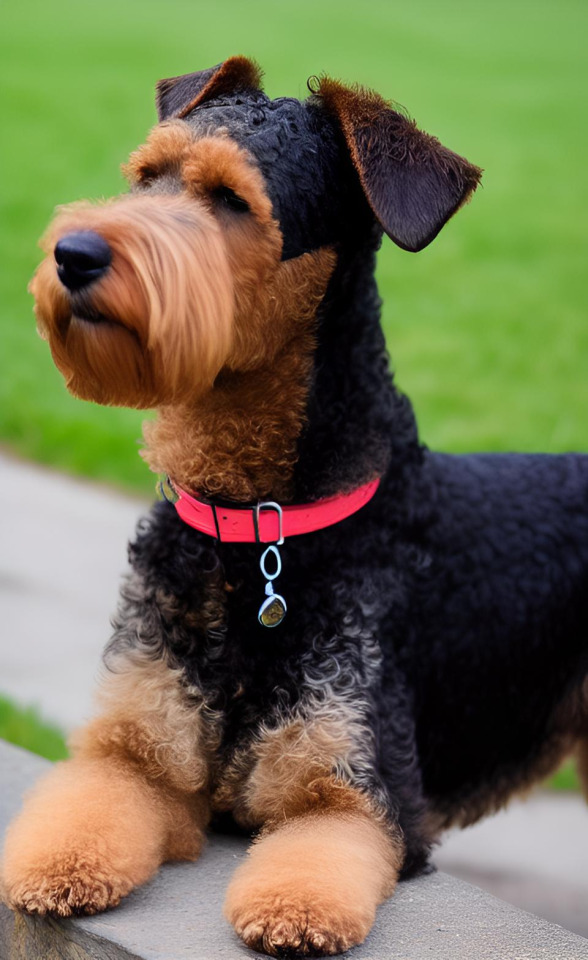
Airedale Terrier
5/10 weird patterns

Barak Hound (Bosnian Rough-haired Hound)
1/10 what is this, this is not a Barak Hound
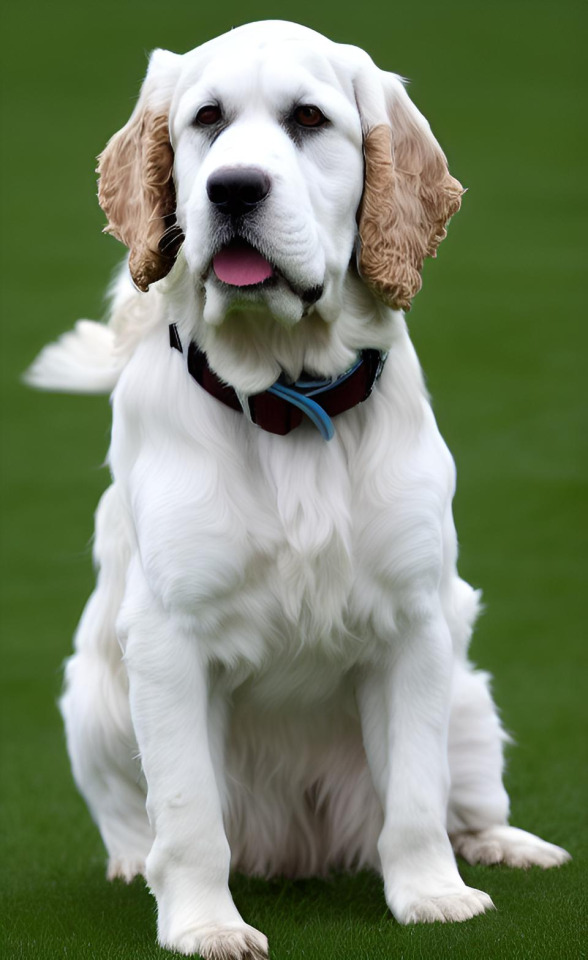
Clumber Spaniel
7/10 weird looking but it got the basics
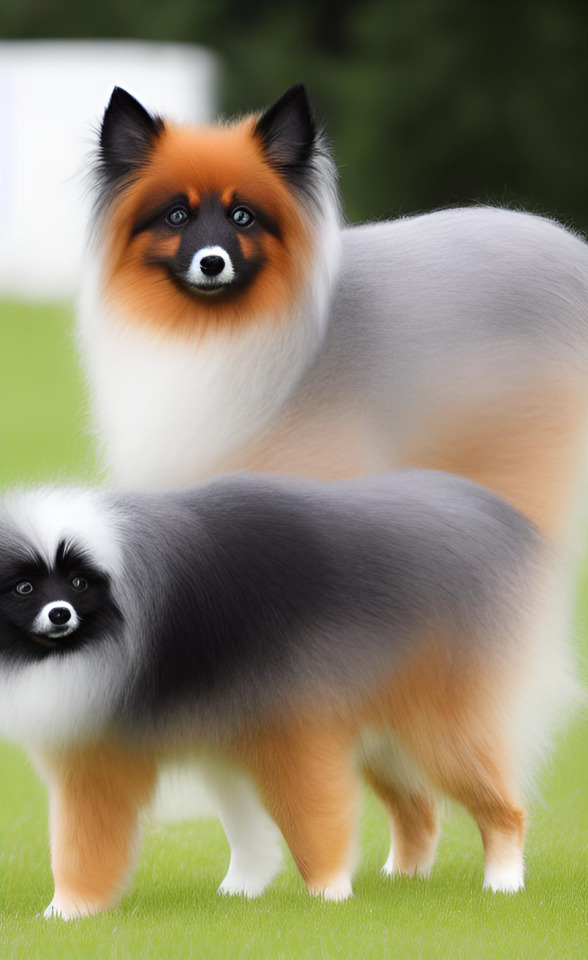
Danish Spitz
10/10 hauntingly unearthly beautiful. Not even remotely a Danish Spitz, what am I looking at, that is barely even a dog
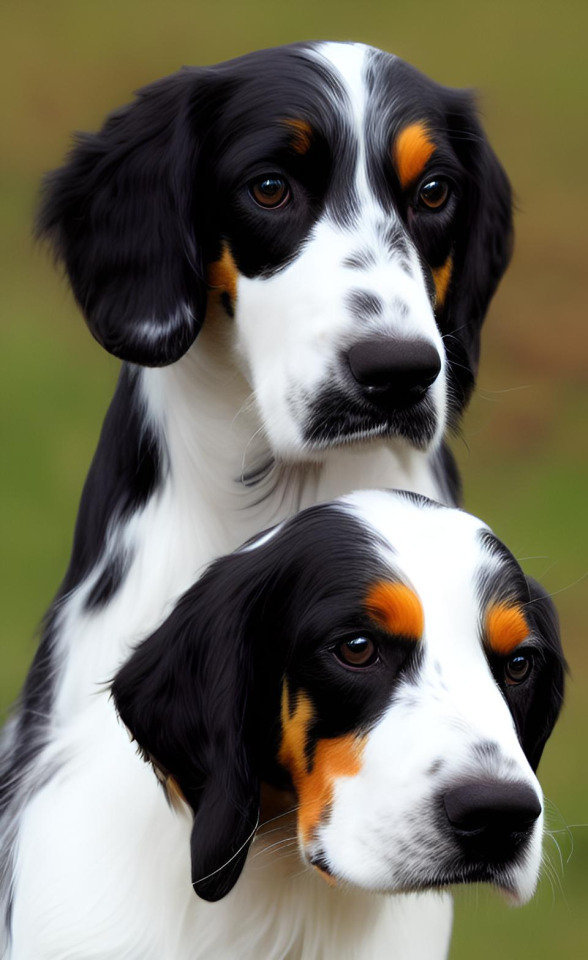
English Setter
6/10 great image, not even remotely an English Setter
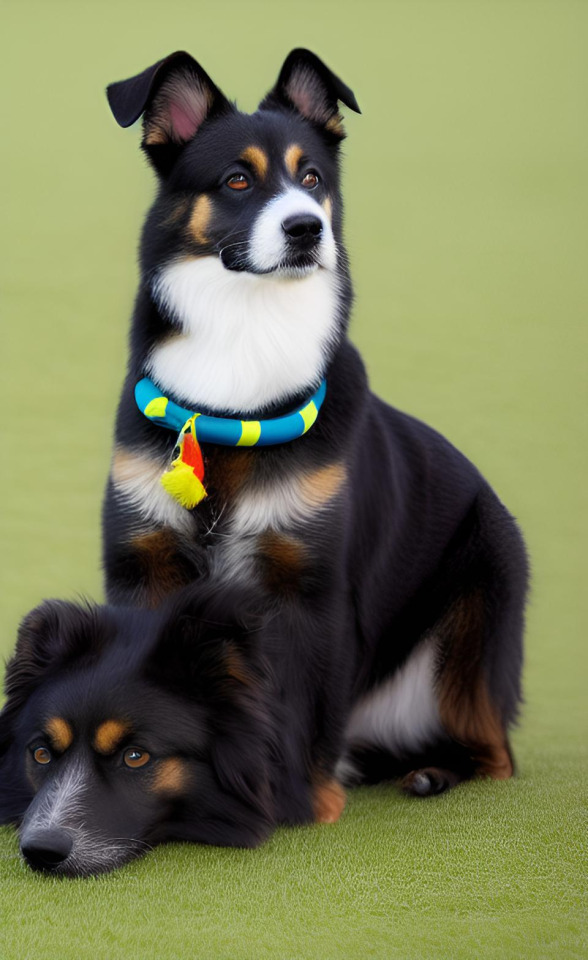
Fila Brasileiro
-305839/10 NO. What is this? Not even remotely the same kind of dog, what am I looking at, stop!!
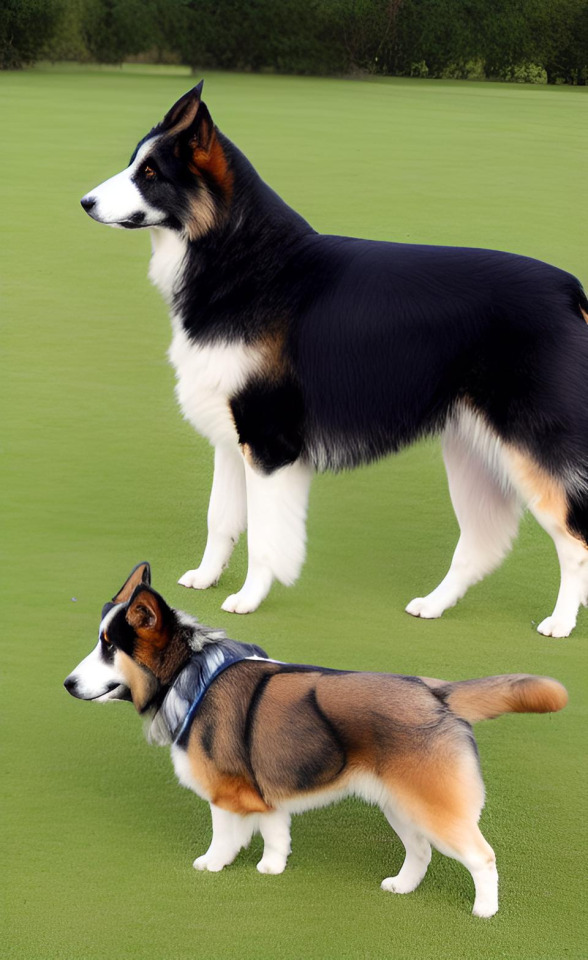
Greek Shepherd
6/10 majestic and adorable, not even SLIGHTLY a Greek Shepherd
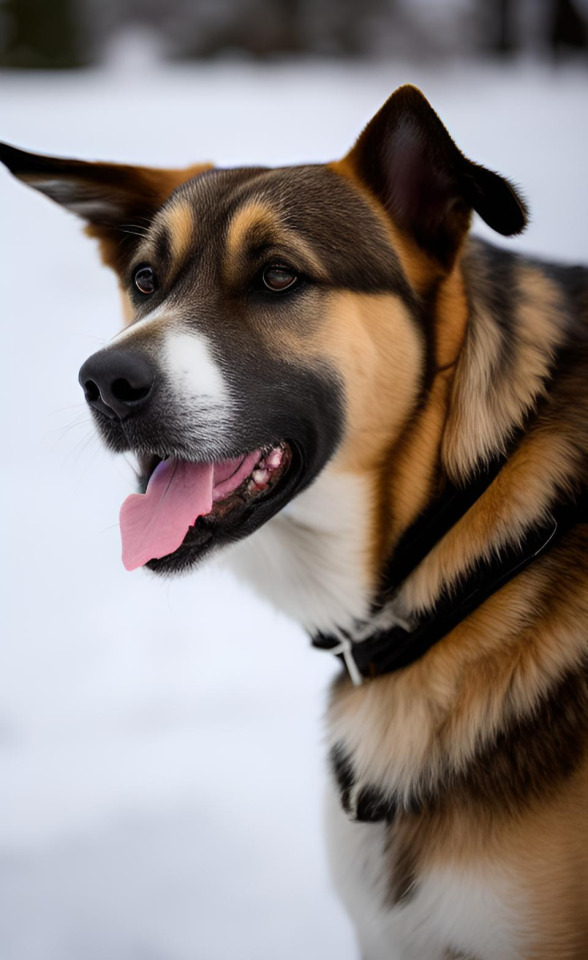
Hygen Hound
7/10 GORGEOUS. Not even A LITTLE BIT Hygen Hound
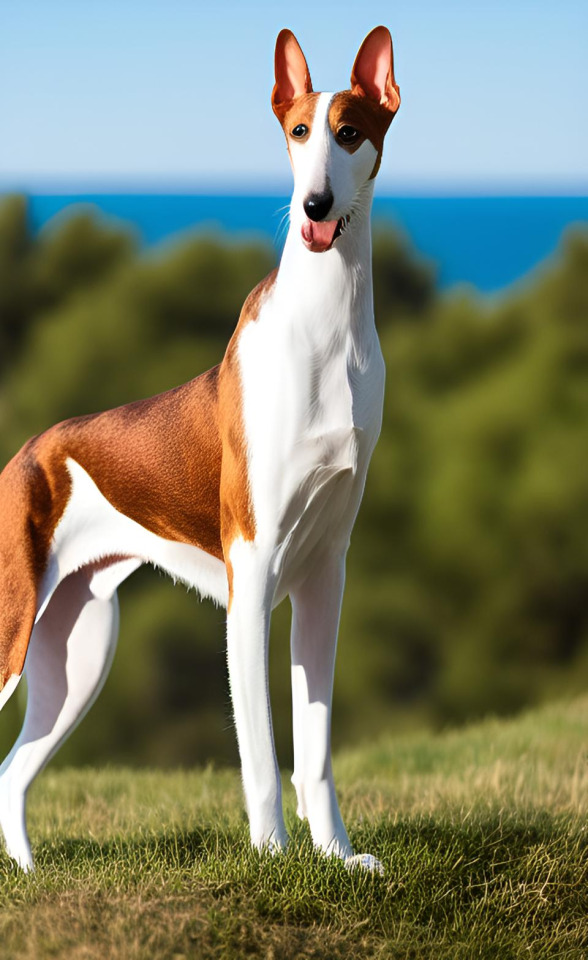
Ibizan Hound
19/10 that is an Ibizan Hound. Lovely.
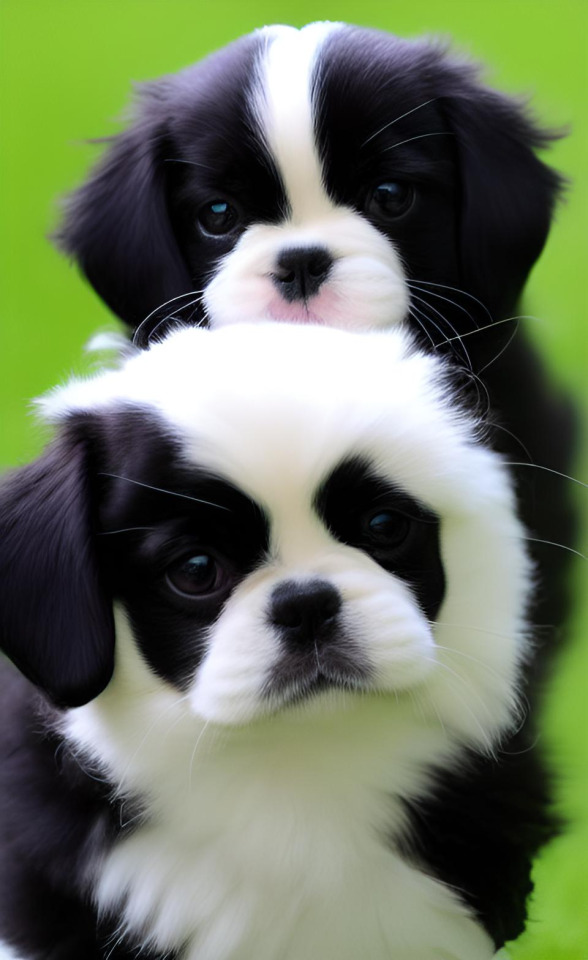
Japanese Chin Dog
4/10 the patterns are close enough, but that is not a Chin whatsoever otherwise
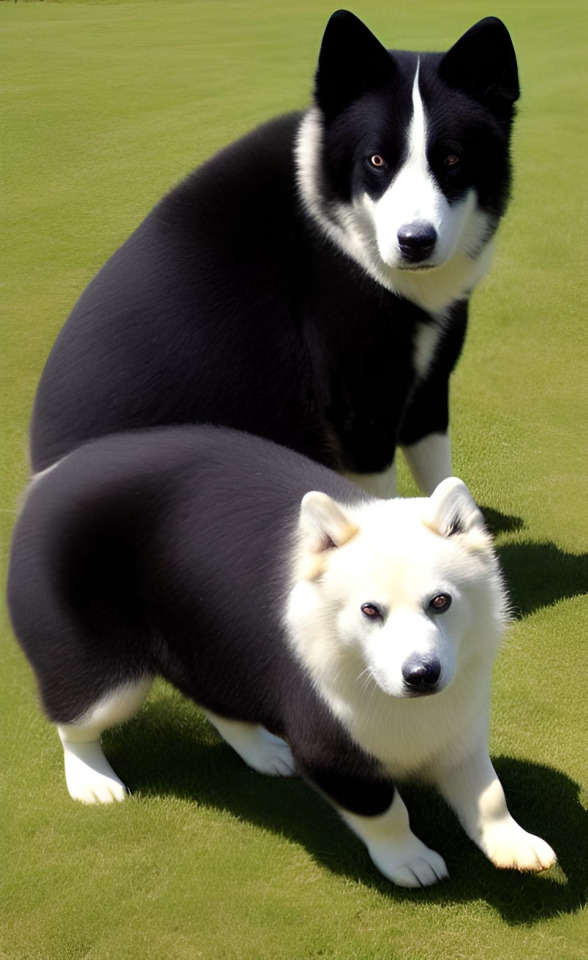
Karelian Bear Dog
8/10 one of them is surprisingly accurate
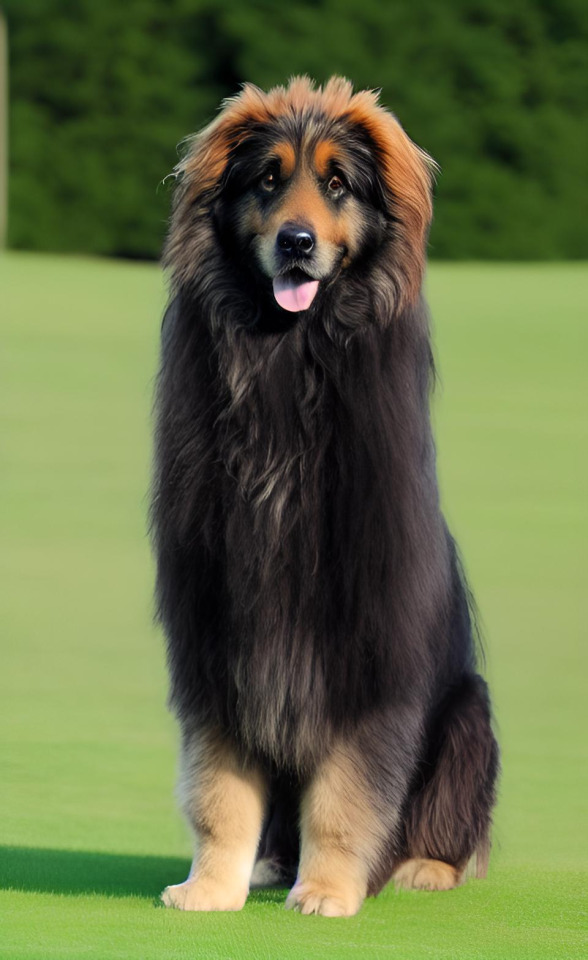
Leonberger Dog
-99/10 NO
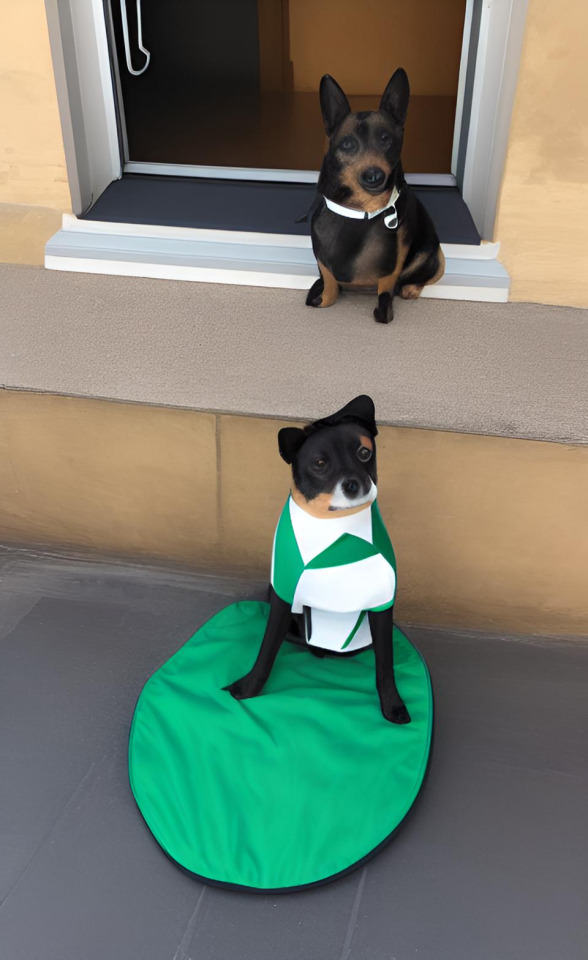
Maneto Dog
5/10 for once they're in an interesting location in one of these, that is 0.0% Maneto
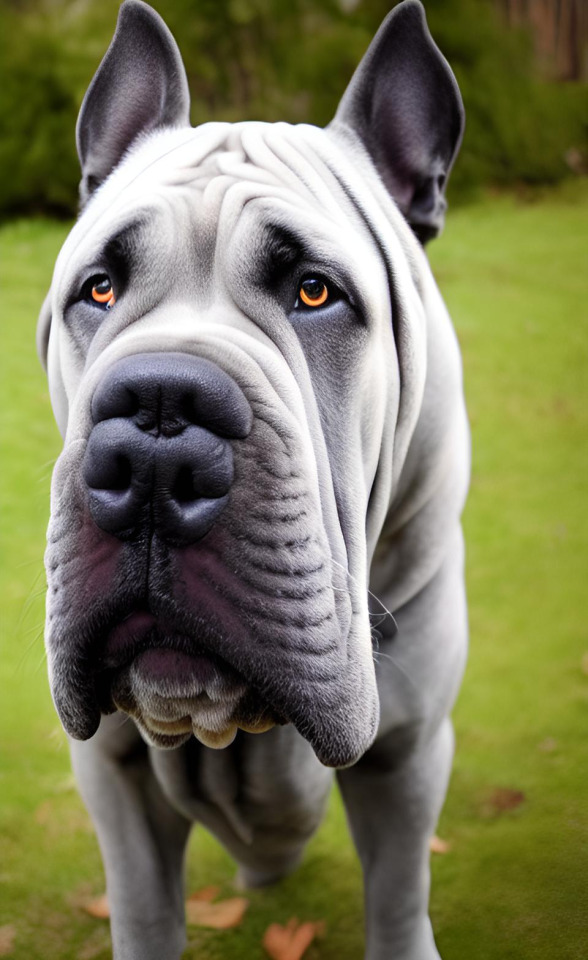
Neapolitan Mastiff
6848577647/10 YES. Double nose and all.

Otterhound
6/10 close enough
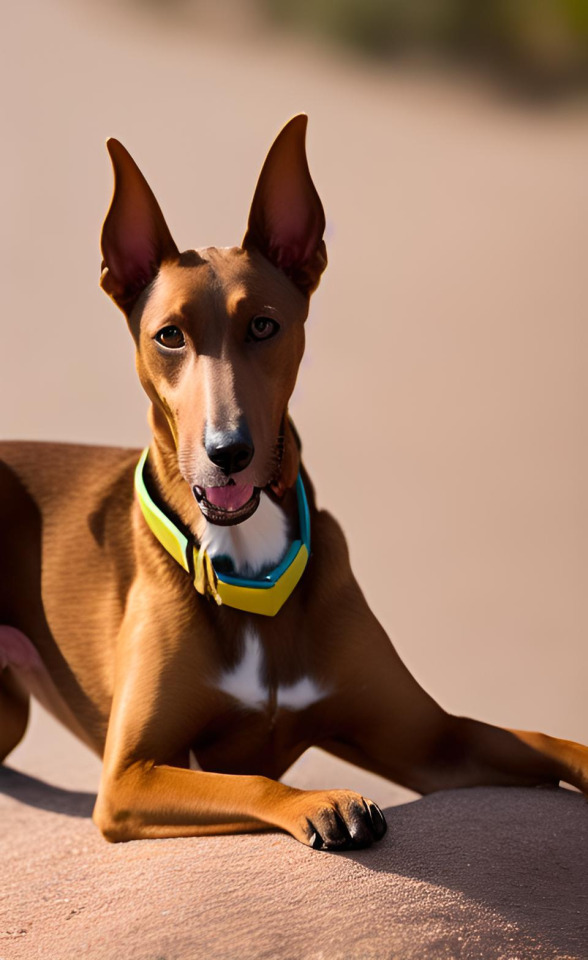
Pharaoh Hound
9/10 Those eyes are huge and terrifying. Otherwise fine.
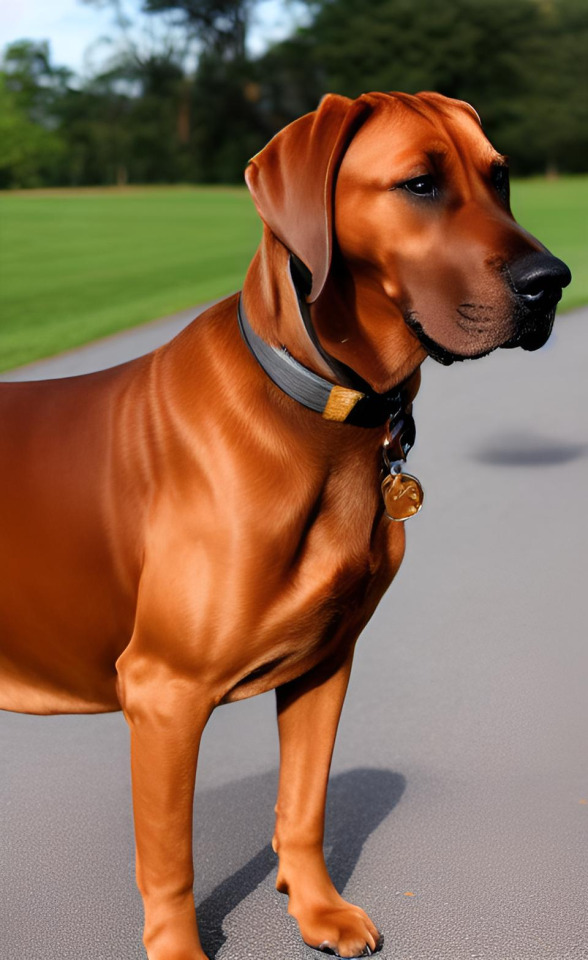
Rhodesian Ridgeback
8/10 hilarious would be perfect if the image were cropped. Is she half dachshund?
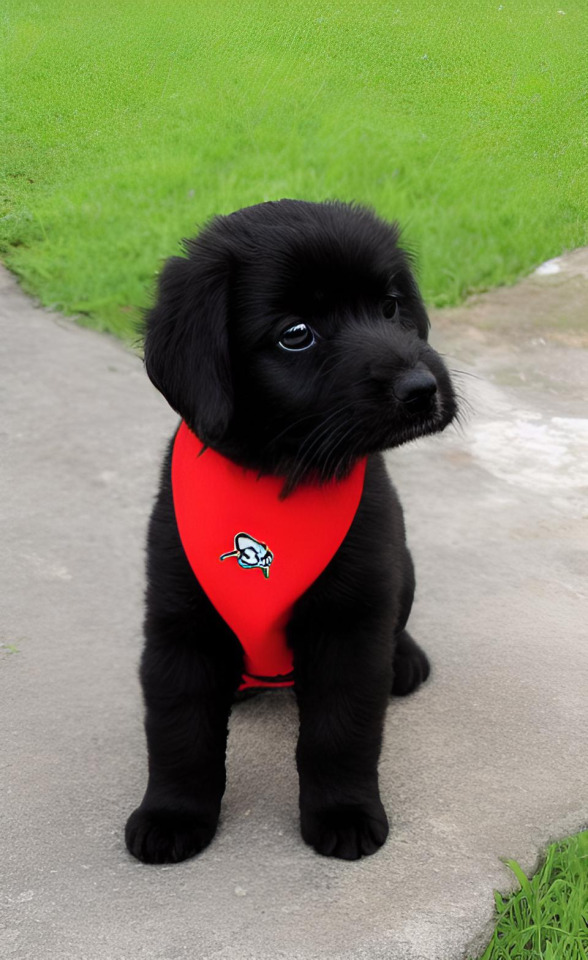
Sapsali Dog
7/10 not even close but that sure is a Creature
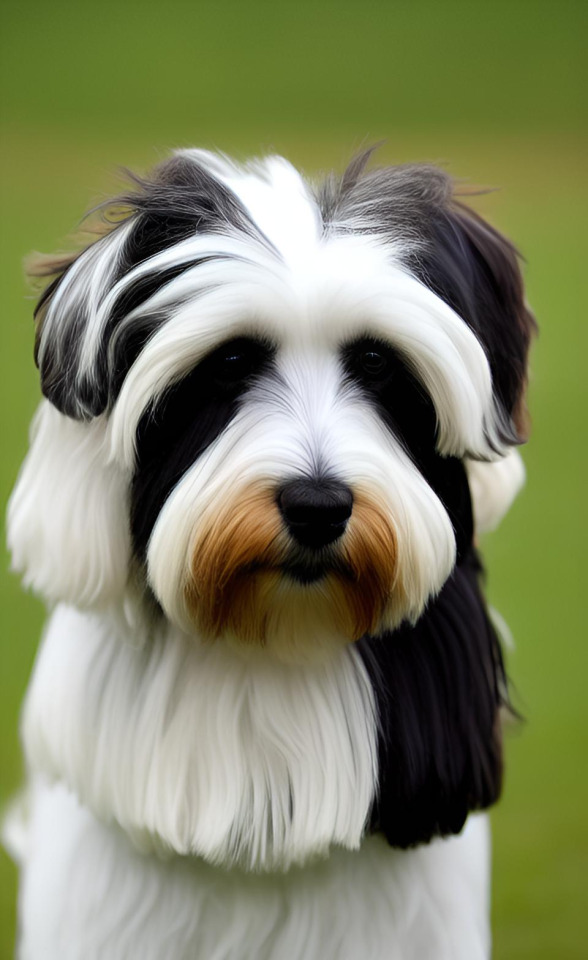
Tibetan Terrier
6/10 a bit. Very interesting animal here.
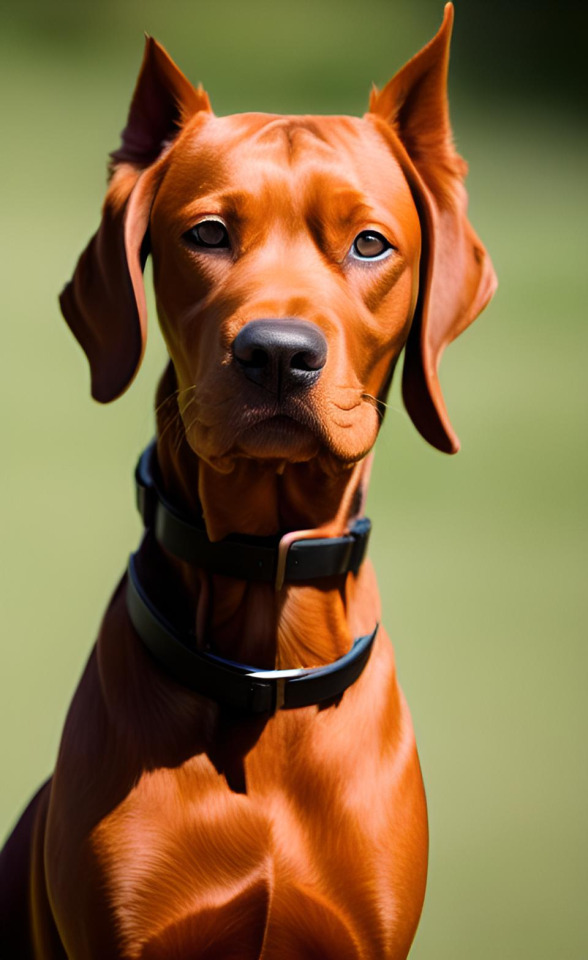
Viszla Dog
937983585899/10 LMFAO yes. 2 collars. 4 ears.
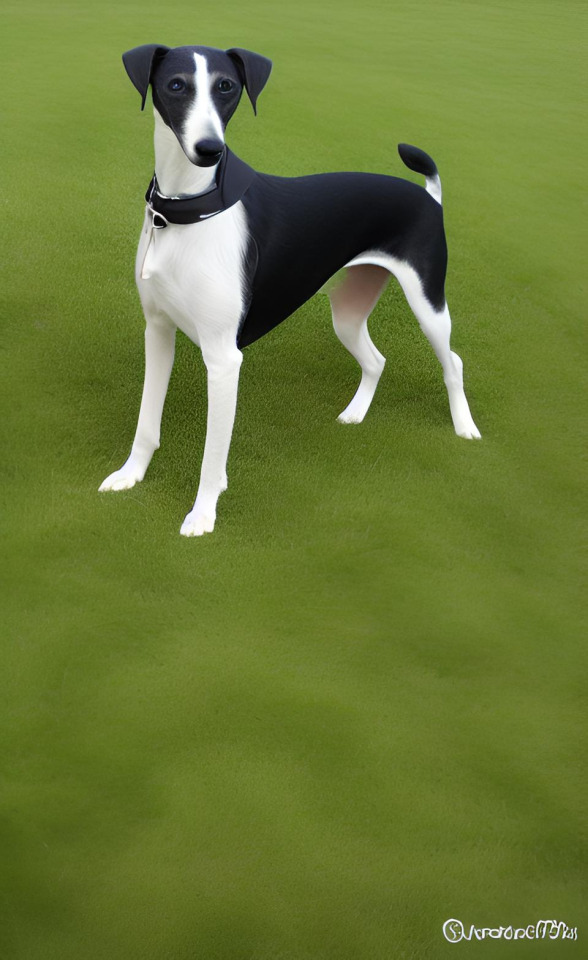
Whippet Dog
2/10 that is anything but a Whippet
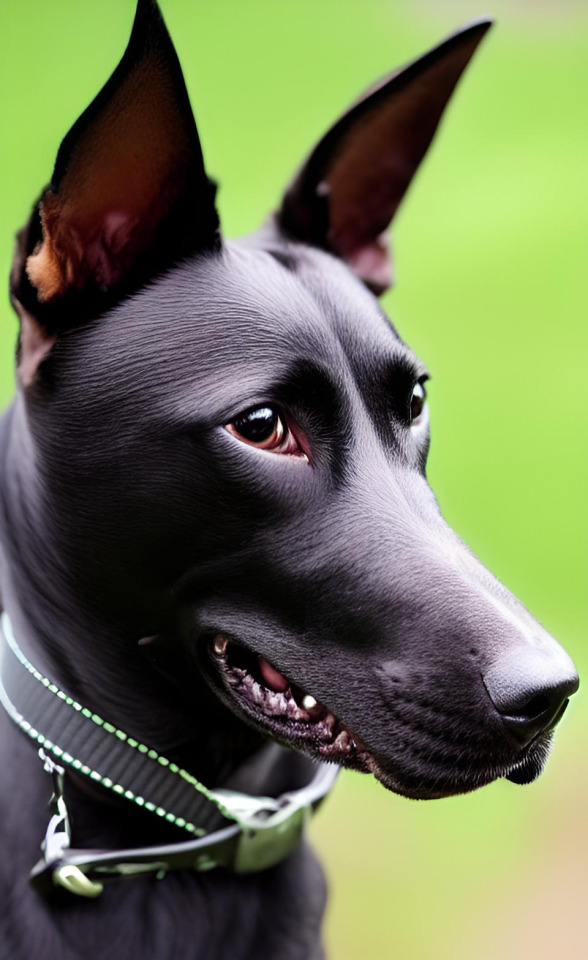
Xoloitzcuintle Dog
-666/10 HORRIFYING.
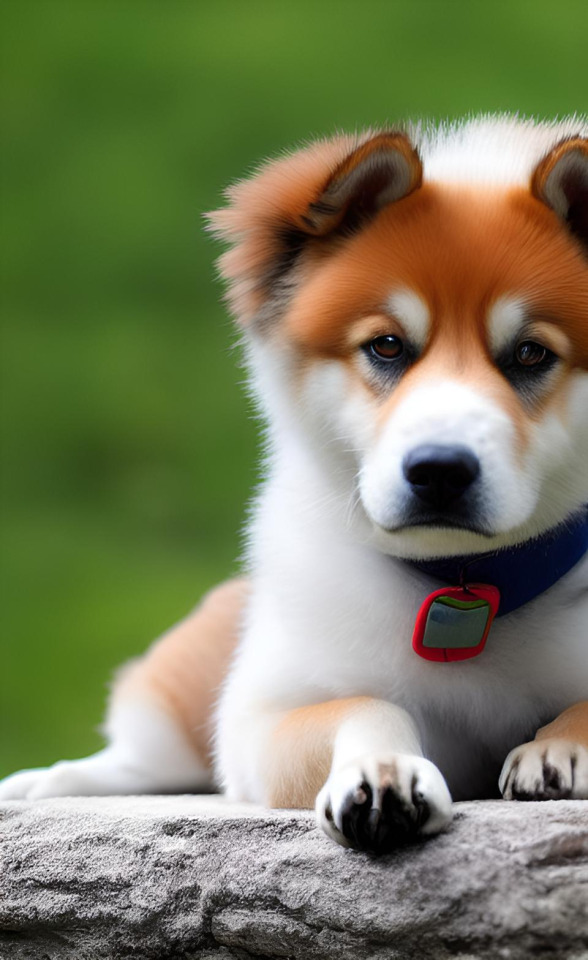
Yakutian Laika
6/10 cool dog, not any kind of Laika
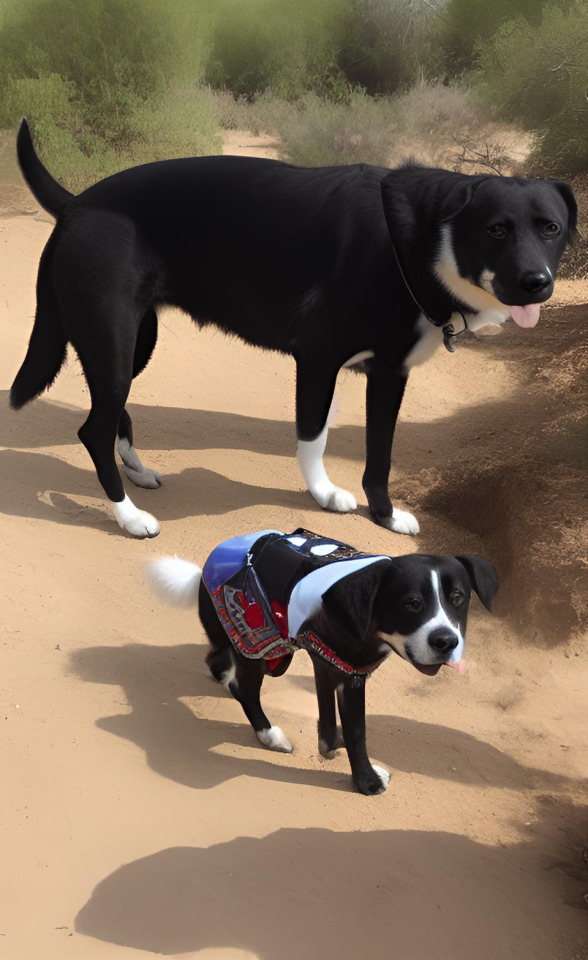
Zerdava Dog
5/10 not even a little bit, bonus points for double tail and adorable backpack/saddle thing
3 notes
·
View notes
Text
I’m still very art blocked so have these doodles of Lisa, my two rescue corps ocs, and my hocotate and koppai captain ocs


I hc Karut to be a cultural melting pot so there’s a decent amount of hybrids living there, which is why Lisa’s ears are round, she has partial koppai heritage.
Lily and Saph are half sisters, same mom different fathers, they’re both from Karut aswell but their mom has Giya heritage, Lily’s father has Ohri heritage and Saph’s father is of an unknown carnivore species. Oh and they’re both based on Sapsali dogs. They’re meant to be a part of two player mode(Lily is player 1 while Saph is player 2) while Lisa is single player mode.
Lily is the younger sister. She fit in rather quickly with the rescue corps since she has a more extroverted personality and is very confident in getting the job done. However, she is also a chaos gremlin who lacks impulse control so she often gets into trouble while on the job.
Saph is the older sister. She is a very skilled sharpshooter and an excellent strategist, but she is very much on the shyer side and is not as confident as Lily. Due to heritage, she has a second pair of eyes that she keeps closed at all times, only opening them in private or when she’s around the people she trusts the most.
Momo is a hocotate freight employee and the assistant of President Sacho. Out of all the employees, Momo is probably the most stressed person there, having to deal with her boss’s and Louie’s antics. Olimar thankfully helps ease her stress a bit and because of it he’s the only person there whom Momo can tolerate. Olimar and Louie are supposedly based on Mario and Luigi so in this case Momo would be based on Peach hence her name.
Emily is a rookie koppaite ranger. She is very outgoing and friendly but is a bit clumsy due to her lack of experience as a ranger. Much like Alph, she greatly looks up to Charlie. The Koppaite captains go by A B C naming and D already exists via a scrapped character so Emily in this case would be the letter E.
9 notes
·
View notes
Text
Hetalia characters as dog breeds
America - Alaskan malamute
Nyo!America - American pit bull terrier
Canada - Labrador retriever
Russia - Samoyed
Prussia - Doberman
Nyo!Prussia - Schafpudel
Germany - German shepherd
Nyo!Germany - Hovawart
China - Chow chow
Korea - Sapsali
Japan - Shiba inu
Wales - Welsh corgi pembroke
England - Parson russell terrier
Scotland - Gordon setter
Italy - lagotto romagnolo
Romano - Italian greyhound
Romania - Romanian mioritic shepherd
Bulgaria - Karakachan dog
Austria - Austrian pinscher
Hungary - Pumi
France - French spaniel
Sweden - Swedish lapphund
Finland - Finnish lapphund
Denmark - Danish spitz
Norway - Lundehund
#aph#hws#hetalia#aph america#hws america#nyo america#aph canada#hws canada#aph russia#hws russia#aph prussia#hws prussia#nyo prussia#aph germany#hws germany#nyo germany#aph china#hws china#aph korea#hws korea#aph japan#hws japan#aph wales#hws wales#aph england#hws england#aph scotland#hws scotland#aph italy#hws italy
10 notes
·
View notes
Photo

I just really needed to start another thing that involved drawing more grayscale dog heads
[find me: shops - instagram - twitter - ko-fi]
#dogs#animal art#illustration#karakachan shepherd dog#chow chow#český fousek#rampur hound#kintamani#irish setter#sapsali#thai ridgeback#borzoi#canaan dog#norwegian elkhound#papillon#danish spitz
240 notes
·
View notes
Text








One of the Facebook groups I'm in features a breed every month, and August 2024 is sapasree month. I thought I would share my posts here so we can spread some awareness and education since information is very difficult to find (in English especially, but also still in Korean).
Day one is just basic information.
Sapsalgae 삽살개, affectionately called sapasree 삽사리/sapsali 삽살이 and occasionally shortened to sapsal 삽살, is an indigenous dog (토종개) from South Korea. The name originally derives from Hanja (Chinese characters in Korean language) 煞 (evil spirit) and 揷 (to stop), and in Hangeul, the name becomes 삽사 (chase evil spirits) where 개, gae, means dog. Thus, the sapsaree's literal name means to chase or ward off evil spirits, and as such, sapsarees are often seen as guardians or protectors that bring good luck and peace.
Sapsarees have lived in South Korea for thousands of years, but exactly how long is unknown. The history of sapsarees are largely known through oral stories, folktales, paintings, songs, and writings. Potential evidence suggests they have been around since at least the Silla Dynasty (57 BCE – 935 CE), and for some time, they were typically kept by royalty. They were largely kept as companions, but they were sometimes used as military dogs (specifics of both of these purposes are unknown but likely along the lines of a general purpose companion, watch dog, and hunter). It wasn't until the Koryo Dynasty (918–1392) that commoners started owning sapsarees. During Japan's occupation of Korea, Japan issued Ordinance No. 26 in 1940 to kill dogs for fur to use as military resources. Sapsarees were largely targeted for their long hair, and an estimated 1.5 million sapsarees were killed during this period. Sapsarees came dangerously close to extinction, and in 1969, professors from the Kyungpook National University began searching for sapsarees. Of the dogs believed to be pure by appearance and behavior, only about 30 were found by 1972 when research began.
The true dedication to preserve sapsarees began in 1989 when Professor Ji-hong Ha committed to getting sapsarees recognized as a national monument (designations to animals, plants, formations, etc. that highlight and represent Korea's heritage), and in 1992, the Korean Sapsaree Foundation was founded and sapsarees were designated as National monument #368. From the original ~30 dogs saved, only 8 remained, and from those, the breed was carefully bred for preservation and protection. In 1999, sapsarees became available to the general public, and more recently, have become available to international buyers. Today, the Korean Sapsaree Foundation permanently houses approximately 500 sapsarees for preservation, breeding, and research, and sapsarees now number in the several thousands.
As sapsarees have always been companions, their strength comes from their qualities and behavior with their family. They are most well known for their loyalty and loving nature, but they are also characteristically gentle, obedient, and sociable within their circle. They are said to love with their whole body with their people. They are not known to be a vocal breed, but they are very watchful and may alert bark at strangers. In doing so, they are characteristically fearless and loud. As current priority is toward health and genetic diversity, specific traits on individuals are less selected for or against. As such, traits like prey drive, energy level, food drive, toy drive, and social friendliness with other dogs may vary. Sapsarees are a smart breed, but they are not bred specifically for work or sport, and sometimes motivating them can take time. Uniquely without being selected for, sapsarees generally seem to enjoy water and are generally very clean dogs (ie, not crate dirty and may hold their bladder for long periods). Weak character and nervousness is a fault, and excessive aggressiveness is a disqualifying fault.
Appearance-wise, sapsarees are known for their rectangular shape, large head, large ankles, and shaggy (furnished) fur. Combined with their watchful nature, they are sometimes called "lion dogs" but generally have a amiable appearance. While they are known for their shaggy fur, approximately 3% of sapsarees have what is called "short fur" (unfurnished). In Korean, the short hair sapsarees are sometimes called Goryegae 고려개 (a term coined by Professor Ha), but they are genetically the same. In Korea, sapsarees are considered large dogs. However, they are generally a medium-sized dog at about 52-63 cm tall and 20-30 kg (20-24 in tall and 44-66 lb). They have floppy ears and are generally moderate and well balanced dogs in all aspects due to lack of specific breed purpose and trait selection. Because of their near extinction, priority has been placed on health and genetic diversity. While some selection toward appearance is considered, there remains some variation in appearance in regards to subtleties and specifics. Per the foundation, sapsarees are considered blue or yellow, or variations of blue or yellow, or spotted. Genetically, sapsarees appear to be able to be black, brown/liver, blue, various intensities of red (including a very light cream), and piebald. Various markings and variations appear as sable, agouti, masks, minor ticking on noses and paws (more ticking may be noted on piebald dogs), tan point, and residual white on the chest, paws, and nose. Erect ears are a disqualifying fault.
#sapsaree#sapsali#sapsalgae#sapsal dog#sapsal#primitive dog#rare dog breed#rare dog#korean sapsali#korean sapsaree#삽살개#삽살이#dog#삽사리#AboutTheSapsaree
10 notes
·
View notes
Photo
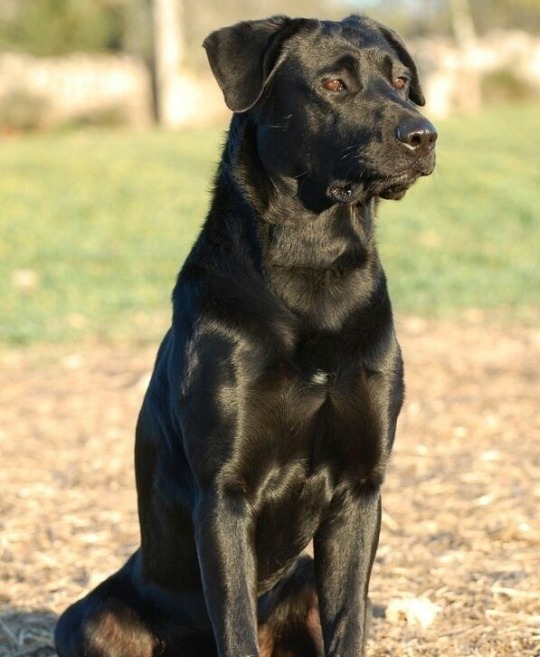

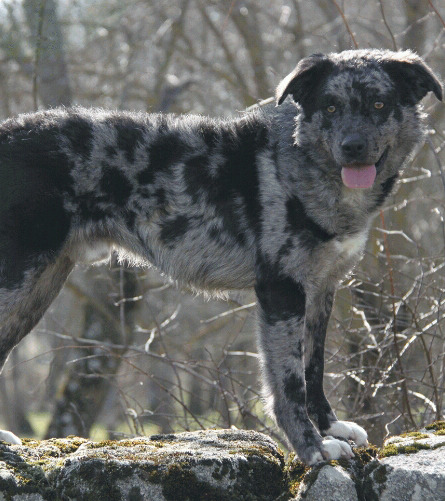


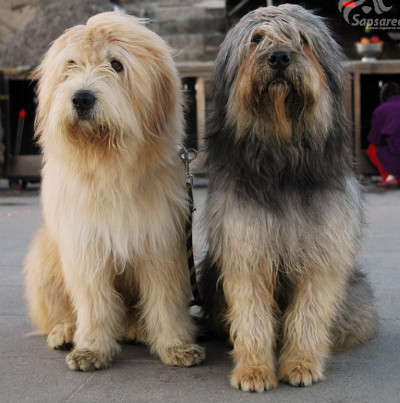
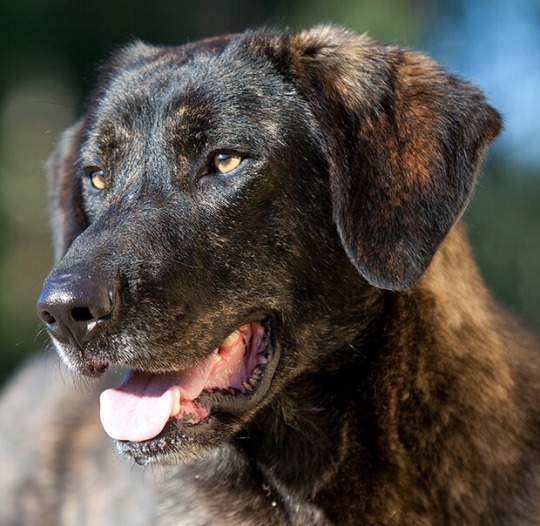


lesser-known dog breeds
majorca shepherd (spanish herding/guard dog), greek harehound (greek scenthound), carea leonés (spanish sheep herding dog), cane di oropa (italian cattle/sheep herding dog), donggyeongi (korean breed), sapsali (korean breed, believed to dispel ghosts and evil spirits), cão de castro laboreiro (portuguese livestock guardian), liangshan (chinese generalist hunting dog), xiasi hound (chinese guard, hunting and boar-baiting dog)
8 notes
·
View notes
Text
instagram
#sapsali
0 notes
Text
Deeper Examination of The Mystery Surrounding The Lost Daughter of the Jin Family
Here on my blog I like to think through things in many different ways. Solving mysteries and coming up with new theories is always so much fun! Now, one of the biggest enigmas in AOS is who is the lost daughter of the Jin family. Our top two candidates are Naksu and Mu Deok. I have proposed various theories which argue it can be either parties. Today I would like to present another theory: Naksu is Bu Yeon and has returned to her original body or what we know as Mu Deok’s body. Mind blown yet?

As crazy as it may sound, Naksu and Mu Deok may have swapped souls when they were just children by Jin Mu. Just hear me out! First, the soul shifting blue marks are like bruises which means they do eventually disappear over time. One can hasten this process by applying various treatments such as eye droplets. If Naksu and Mu Deok were swapped as children then their blue marks would’ve disappeared by the time they were teenagers or adults.

Now let's play devil’s advocate. What if the body Naksu was in, was not actually her real body? What if the body she is now aka Mu Deok’s body was her original body. This would mean that the body we have come to know as Naksu’s body was actually Mu Deok’s. Does this make sense? As crazy as this theory may be, it could explain a lot of things.
Maybe the real reason why when Naksu casted the spell it chose Mu Deok was because it was trying to return her to her original body aka Mu Deok’s body. Think about it for a second. One knows that one must cast the Alchemy of Souls spell twice in order to return to one’s original body.

For example, the case of the King and Jang Gang. The first time the spell was casted, it swapped the souls of the King and Jang Gang. The second time it was casted, each party returned to their respective bodies. If the spell was casted when Naksu and Mu Deok were children and then again when they were adults then it would make sense why the spell chose Mu Deok’s body over that bar maid’s body. It was because it was returning Naksu back to her original body.

Side note, I did mention that I believed the soul ejector was only needed when one was stuck in a non mage body. If both bodies involved are mage bodies then the soul ejector would not be needed to reverse the soul swap. One would simply only need to cast the spell to return to one's body. Hope this makes sense.
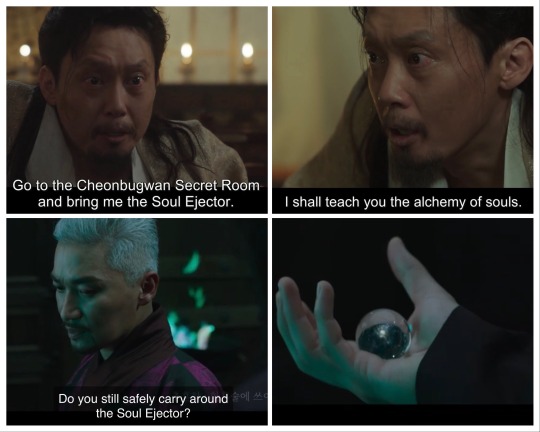
Something else to point out is the gap between one's soul and the body one inhabits. We know Sapsali is able to detect the "evil" energy that leaks out between this gap. So why is there a gap if Naksu was returning to her original body? Two potential explanations. The first is that Mu Deok's soul did not leave. Since their souls were switched when they were babies, they both were probably unaware of what had occurred in the first place. So maybe Mu Deok's soul did not want to forfeit her body because she truly thought it was hers to began with. The gap would probably dissipate once Mu Deok gives up control. Or it could be that Sapsali was detecting Mu Deok's soul as the one being the soul shifter. Again, this gap would go away once Mu Deok's soul disappears. Anyways, the second explanation is that too much time has passed since Naksu's soul was back in her original body. Therefore her body might not be able recognize its' original soul.
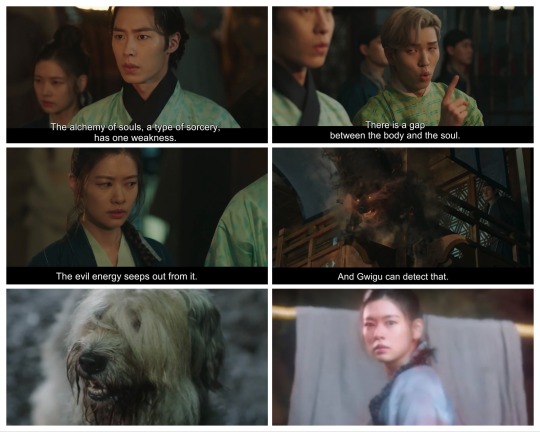
Jin Mu is truly an evil and twisted man. He wanted to ensure that his stepsister could never find her daughter. It's hard enough to find a person, but could you imagine also having to find their soul? That’s like trying to find a needle in a haystack! It's nearly impossible because one would not even know where to began searching! Even if Mama Jin and Daddy Jin had recognized their daughter as an adult, how would they be able to find her soul? Jin Mu had planned for every possible outcome!
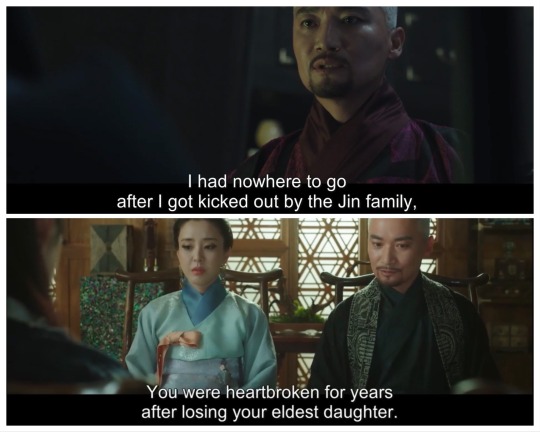
Jin Mu kept Bu Yeon’s soul close to him by making her one of his minions and then tossed her body out into the streets to wonder. As a final fuck you Jin family, he sealed the core energy in her body. This would make her body so weak that even if Naksu/Bu Yeon was able to cast the Alchemy of Souls spell and return to her original body, she could never come after him because she would not have the power to do so.

The only way she would be able to assess her energy/powers is if there was a great mage who could unseal it for her. However, it was like Jang Uk pointed out, no one would be willing to help Naksu/Bu Yeon because the world hated her. Jin Mu made sure of that when he made her an assassin. There are just some things he did not account for, Naksu/Bu Yeon was extremely strong/had killer survival instincts and there was a mage who might be willing to unseal it for her….Master Lee. It would be nice if it were Jang Uk, but let's be real here....that boy is still learning how to walk. However, it still could be that it is Jang Uk is the one who will unseal her gate of energy.
Additionally, because he made her soul strong by turning her into one of his assassins and her body weak by having her gate of energy sealed, she would face the problem of running wild and becoming petrified even if she were able to return to it.
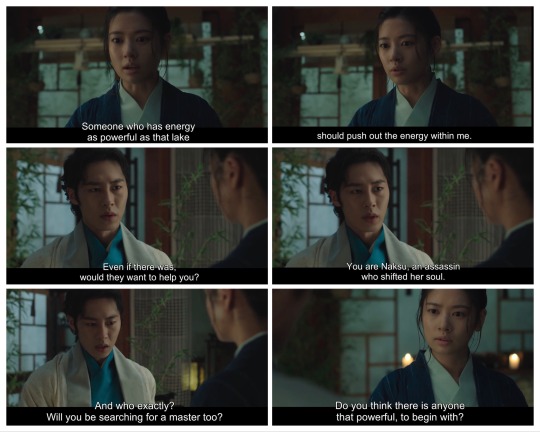
Ultimately what I feel is going to happen is Naksu/Bu Yeon and Mu Deok will have like a one on one chat with each other and figure things out. Once that happens, Mu Deok will relinquish control of the body and simply disappear to be with her real family in the afterlife if such a thing even exists in the world of AOS.
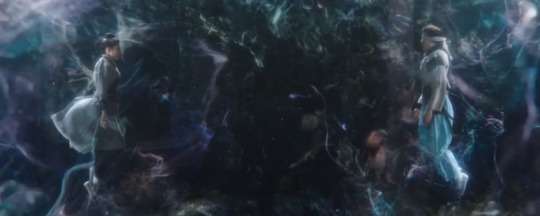
At this point, the body and soul of Naksu/Bu Yeon will finally become one or in unison. This is when the real shit really goes down. Naksu will come after Jin Mu with everything she’s got. Maybe the big epic battle in AOS will be Jin Mu and his army of soul shifters (remember that Dang Gu said a lot of officials have been disappearing...maybe Jin Mu is creating an army) vs Naksu and the four families….WOW!!! If this is where season 1 ends then it would definitely be a huge cliffhanger! Season 2 has been confirmed to be 10 episodes long and is currently being filmed now. This means in total AOS will be 30 episodes long! So maybe in season 2, it will show the outcome of the battle, Naksu being reunited with her family, and weddings! I can't wait!
#alchemy of souls#theories#lee jae wook#jung so min#hwang minhyun#minhyun#yoo in soo#arin#mages#alchemy#magic#kdrama#jang uk#mu deok#dang gu#seo yul#naksu#jin cho yeon#jin mu#lost daughter of jin family#bu yeon
115 notes
·
View notes
Text

FINALLY SOME DAEHO LORE!! 200 years ago, there was a drought so bad that even the lake dried up. The mages brought it back by summoning hail. The scene with the blindfolded mage dancing in the water with the sunset behind her was SO cool!

But there was one piece that neither melted nor kept its shape. It kept shifting from ice to fire to stone to water and back to ice. That process produced a black powder.

People fought wars over this piece of ice because the power to switch bodies and essentially never die is incredible. But Master Seo Gyeong, Songrim's founder and Master Lee's teacher, stopped all the fighting. It turns out that Master Lee is telling this story to children on a boat. One of them has a wooden figure, and Master Lee asks him where he got it. "I found it on the mountain." Master Lee asks if he'd like to trade it for some chestnuts and he agrees.
It turns out this relic is cursed and Master Lee instantly destroys it, much to the awe of the children. The kid who had it says he knows all about relics and Jinyowon. Apparently all the artifacts there were created with the ice stone, and that's why they're so powerful. The camera zooms in on the mirror that swallowed Mudeok and we see her hand slam against the glass from the inside.
The scene switches to the Crown Prince, who is still salty about Mudeok's rejection. To make matters worse, he's being served cinnamon wine again, which only reminds him of Mudeok's reaction to the strong scent. He sends his servant away and mutters about Mudeok and the candles flicker. And then there she is.

CP pours her a cup of cinnamon wine and tells her that this batch is stronger than the last. Mirror!Mudeok (MM) says it smells good, which baffles CP. It seems like whenever someone thinks of Mudeok near a mirror, she'll be able to appear. CP is a powerful mage and is immediately able to tell that this is not a human. He demands to know who she is. MM sighs and says, "Ah, you caught me." The mirror cracks and she's gone. He wonders why this spirit looks like Mudeok and then stares at the cracked mirror.
While the Jin estate has mobilized every guardwoman to search the grounds, one reports that CP has arrived. Lady Jin is confused, since it's nighttime. CP says he's looking for someone, but notices that the estate seems to be on alert and asks what's going on. Lady Jin says that a maid caused trouble and disappeared so they're looking for her. "She doesn't work for us. Her name is Mudeok from the Jang family." That's just who CP is looking for!
In a flashback, Cho Yeon is seen reprimanding Mudeok for breaking the yin-yang jade and Lady Jin ordering Mudeok to be taken away. Cho Yeon is still boldly lying to CP's face saying that Mudeok must have gotten scared and ran away with the jade. CP doesn't buy it. And now Yul and Dang-gu have arrived! It's an eventful night at the Jin family estate!
Yul is also looking for Mudeok! Cho Yeon is now extra confused, but doubles down on her bullshit. Dang-gu asks her why she didn't have the rings made. He went to Chwiseonru and was told that Cho Yeon had already left. Under her mother's stare, Cho Yeon stammers that she just decided to postpone it.
CP asks why Yul is looking for Mudeok and Yul says that he saw an illusion too. His version of her seems to be a mix of Naksu and Mudeok, since in Danhyanggok they kept overlapping. Interesting!

Yul realizes that she's not human and readies an attack but MM says, "Are you going to get rid of me? Then you'll never get to see me again." This is enough to make him hesitate and she almost gets close enough to kiss him. Yul pushes her back into the mirror just in time.
We switch over to Lord Park and Master Heo, who is watching the spirit dog. Gwigu/Sapsali was created by Seo Gyeong to sniff out forbidden sorcery. Lord Park wonders if someone found where the ice stone is sealed due to the increase in soul shifters.


We know that the only two Hwansu masters are Seo Gyeong and Master Lee. Yet Jang Gang was able to perform the alchemy of souls somehow and now Jin Mu can. Lord Park theorizes that someone must have found the ice stone and broken its seal and they must not let the chaos from 200 years ago repeat.
Speaking of Jin Mu, he's got a special delivery: soul ejectors! A lot of them. Where is he getting these???

Eunuch Kim says, "I thought you were going to lie low. Are you planning on shifting more souls?" Obviously a villain can't reveal his plan to just anyone. Jin Mu tells Eunuch Kim to report that he received the gift and he leaves. Jin Mu tells Gil Ju (previously known as Right Hand Man) to hurry up and find a replacement body so that Gil Ju's soul can be shifted into it.
But Gil Ju has other plans. He will use Naksu to get the body he wants, which is probably Uk's since it fades to him right after. Jang Uk apologizes for Mudeok's supposed wrongdoings and Cho Yeon tells him that she begged her mother for that jade because it ensures a long & happy marriage for couples. Lady Jin is satisfied with his seemingly sincere apology and dismisses Uk, but he refuses to leave without Mudeok.
Under the pretense of finding the "wicked maid" who stole such a valuable item, Uk seeks Lady Jin's permission to stay and search himself. He is granted this permission, which he uses as leverage to ask Lady Jin to open the door to Jinyowon and its relics. Lady Jin isn't convinced but both Yul and CP saw an illusion that looked like Mudeok and the only place with an artifact that can do that is Jinyowon. The door can only be opened by a Jin, which is a matriarchal line. Which means only Lady Jin and Cho Yeon can.
AND YET we saw Mudeok casually strolling through Jinyowon last episode! Given how everything in the Jin estate reacted to her, I'm willing to bet that Naksu was actually the eldest Jin daughter that disappeared. There are missing pieces though: she remembers her father was a constellation recorder mage, and everyone in Cheonbugwan was killed.
Why would she be at Cheonbugwan if she was the heir to the Jin family? We can't trust the memories of a traumatized child. There's something else going on here... Lady Jin warns Uk that he may not return but Yul and CP say they'll both go in with him. Lady Jin gives them an hour.

She's so effortlessly sexy wtf!!
CP & Uk immediately start being catty to each other while Yul remains stone faced. But apparently even he can be rattled, as he immediately starts heading in the wrong direction. They all run right past the mirror, which is dark. Inside, Mudeok is surrounded by many different versions of herself and wonders how she got there. We then see her side of the story.
Mudeok tells Cho Yeon that whoever breaks the yin-yang jade will never have a long-lasting relationship and the one they love will never love them back. She pretends to be distraught about this, which makes Cho Yeon freak out and she falls perfectly into Mudeok's trap. "Why is Young Mistress Jin worried, when I'm the one who broke it?" She drops the act and says that Cho Yeon broke it and made Mudeok carry it so she could blame her.
Cho Yeon asked why she didn't bring it up in front of her mother, but Mudeok says she wouldn't dare humiliate Lady Jin's daughter in front of everyone. She's not scared of Cho Yeon.

Cho Yeon reveals that she also fears her mother but she hates Mudeok just as much. After she storms off, Mudeok escapes out the window and is somehow able to sneak through the estate grounds. Cho Yeon returns to find Mudeok gone and grabs the jade. Meanwhile, Mudeok sees a door mysteriously left open and finds herself in front of Jinyowon. When she touches the vine-covered wall, it reveals the door, which opens for her.
AND CHO YEON SEES MUDEOK ENTER JINYOWON. She has a moral dilemma: if Mudeok gets stuck with the artifacts, she could die. After looking at the broken jade, Cho Yeon decides to lock Mudeok in. Back the the present, Cho Yeon is fretting about whether or not Mudeok died and Dang-gu takes notice. He says that every time she moves, he hears a sound. Almost like jade clinking against each other... She grips a bag under her skirt and Dang-gu sighs.
Inside Jinyowon, Yul says that the hour is up and they must head back. Uk refuses to leave without Mudeok and asks how the illusion appeared. Yul says that she said, "I came because you longed for me." CP said his illusion said the same thing. He realizes that she didn't appear to Uk, her supposed master, and rubs it in.

A totally normal and not jealous reaction :) Yul is not so dumb as to tell his friend what he was thinking about, but he makes the correct conclusion: the mirror broke. CP says his did too. They rush back to the mirror, which shows a smirking reflection of Uk. The other two report to Lady Jin with their findings. AND OFC IT'S CALLED THE MIRROR OF LONGING.
Yul asks Lady Jin to remove the mirror from Jinyowon so that they can rescue Mudeok, but she refuses. An artifact that swallowed a human is too dangerous to be allowed outside. CP tries to order her, but Lady Jin says that this is the exact reason her family has the plaque that allows her to refuse even if the king asks. It's a failsafe put in place after the disaster the kingdom was in 200 years ago.
Yul says that Uk won't leave without Mudeok, and Lady Jin says that he will have to stay there. Once the hour is up, she will seal the door. Now that Uk is in danger, Cho Yeon finally shows her mother the broken jade and begs her not to lock him inside Jinyowon. Lady Jin will not budge. Meanwhile, Uk is fighting with the mirror. It says that humans cannot see themselves without a reflection and it only shows them what they long to see. Uk realizes then that if the mirror has nothing to reflect, it's useless. So he covers it up and yells for Mudeok.

She hears him! She calls back to him and he can hear her, too. But!! Time's up and it's time to seal the door. Just as Lady Jin orders Cho Yeon, Lord Park appears with Head Maid Kim in tow. He says that he will retrieve Mudeok himself, but Lady Jin asks how she's supposed to trust such a high level mage amongst the relics.

OH?!?!?!? MA'AM WHAT DOES THIS MEAN!! (Is this about Naksu's father?)
Lady Jin says that if Lord Park wants to save Jang Uk, he'll have to bring all the mages from Jeonjingak. Lord Park orders Yul to bring Uk back. Inside Jinyowon, Uk is having a heart to heart with Mudeok. First, he offers to make her Danju but she rejects that. Why would the Gwanju keep a soul shifter by his side? Then he admits that without her, he doesn't know what to do. He touches the mirror and says he misses her and Mudeok does the same from her side.

[CUE ROMANTIC MUSIC AND FLASHBACK]
But then the artifacts start rattling and repeating words from the past. A female voice says, "It's her!" A male voice asks, "Who?"

A blind girl is mentioned right before the ice stone. I KNEW the original Mudeok was powerful! The mirror starts to crack on Mudeok's side and she tells Uk to stand back. When it cracks, there's a flash of light and the doors of Jinyowon outside light up. When they open, Uk is carrying Mudeok on his back. He sees Lord Park for the first time since their fight and bows to him.
Cho Yeon confesses before Lord Park, CP, and her mother. Lady Jin asks about the Mirror of Longing and Cho Yeon says that it was next to her when she fell but she didn't touch it. Uk isn't strong enough to break it, so Lady Jin assumes it was Cho Yeon. Lord Park then asks if she also locked Mudeok in Jinyowon.

Her mother doesn't believe this, as only women from their family can open the door. Cho Yeon sheepishly takes the blame and Lord Park says that he will make sure this news doesn't get out to Songrim and CP says he will do the same. Lady Jin apologizes for her daughter, which only makes Cho Yeon more guilty. GOOD!! Your brattiness almost got someone killed!
It seems like the bright light from the mirror has made Mudeok unable to open her eyes. Head Maid Kim wraps her eyes and leads her outside, where Mudeok hear's Dang-gu's voice. Then Yul's, then CP's. HMK says that they all came looking for her when she went missing, so Mudeok should apologize and thank them. Uk does the most ballsy thing of all and takes her hand in front of everyone.

HMK and Lord Park discuss Uk and say that the marriage with Cho Yeon will probably not proceed after what happened. Lord Park understands why Lady Jin acted the way she did - sometimes, when you have something important to protect, you must act heartlessly. She tells Lord Park that he should go see Uk, but he refuses. They flirt a bit and then he leaves...and runs into Uk.
Uk bows and is about to pass without a word but Lord Park tells him that he acted recklessly. After talking with the mirror, Uk understands that the versions of him other people create in their heads are illusions. He asks why Lord Park wants him to stop wanting to be Gwanju and Lord Park says there's only one thing he wants Uk to be.

Uk says that he will try even harder to find out who he is, which ofc will put him in more danger! And ofc Lord Park can't tell Uk that he's the destined king in the prophecy either. He's gonna find out anyway, my dude. But I understand that this is your bestie's son whom you love like your own.
Speaking of love, Mudeok is able to see again and tells Uk that she briefly regained her power and was able to shatter the mirror. Uk says that when she puts him in danger, Mudeok's life should be at risk too. Keeping that in mind, will he still proceed to marry the woman who almost got her killed? Marrying Cho Yeon would guarantee his safety, but it's true that Mudeok's life was in danger.

He meets with Lady Jin and asks if she's willing to risk having him marry into the family if it turns out that he's not really Jang Gang's son. As he's leaving, Uk runs into Jin Mu. He notices that Uk is still wearing the binding bracelet and comments on it. Uk just looks at it and says "yep I do" and walks away. Jin Mu is appalled by this level of cheekiness but Gil Ju still wants to shift into Uk's body.
It turns out Jin Mu came to demand why Lady Jin tried to marry Cho Yeon off without consulting him. She asks why Jin family affairs would concern him. He pulls the "noonim" card and says he's also part of the Jin family. So she's the older sister. Interesting!

Lady Jin still refuses to see him as a Jin, since they're a matriarchal line. Apparently, her mother was the one who allowed Jin Mu to use the surname even though Jin Mu's mother was some rando. He says that she already kicked him out when she became leader of Jinyowon, but does she really resent him that much? Resent isn't strong enough - more like detest. She calls him treacherous (go off queen!), but he brushes it off.
Jin Mu says that Jang Uk is the wrong choice for a son-in-law. His offer: CP. Lady Jin finds it laughable but Cho Yeon is the second daughter. Jin Mu says the eldest daughter, Bu Yeon, will become leader of Jinyowon. This piece of shit loves to bring her up only when it suits him, huh? I detest him too :) Lady Jin basically tells him to get her daughter's name out of his mouth.

He says that he will become Gwanju and support Jinyowon because, after all, he's a member of the Jin family too. This is obviously advantageous to Lady Jin, but like. We all hear the villain voice, right? He's so good at sounding insincere. Sadly, half-siblings or no, Lady Jin and Jin Mu are both alike in their desire for power and she seems momentarily swayed...
We move back to the boys and Dang-gu has a very important question for Yul:

But that's the thing: he wasn't! He was thinking about Naksu. He doesn't understand why the illusion said the things it did. This apparently rattles him so much he starts heading in the wrong direction. Just as Dang-gu gets him back, he notices that packages containing wedding gifts for Cho Yeon have entered the city. He feels like he should intercept them before anyone else sees, but a bird cage gets knocked off the cart and the bird gets loose.
Yul is startled to hear a bird whistle and follows the sound to find Mudeok (naturally) playing the bird whistle he made with the escaped bird on her shoulder. And that's when he pieces it all together.


But he's not the only one who knows. Mudeok senses she's being followed in the marketplace and hides behind a building. Gil Ju is waiting for her.

He tells her to come to a remote temple with her master if she wants to live. Gil Ju will shift into Uk's body. As she's taking him there, Mudeok is trying to rationalize her decision to herself because she is experiencing guilt. To make matters worse, Uk thought that rather than waste the broken yin-yang jade, he should make something out of it.

Matching bird eggs! "To remind each other to stay loyal and dutiful," he says. Whatever you say, bud! Mudeok says nothing, so Uk takes the red egg and gives her the blue one. Mudeok is unable to lie to him and says that this is where they part ways. She will return to her life as an assassin.
Uk is confused. They abandoned her before and tried to kill her. Mudeok says she met someone from her past and they know who she is. They could've easily killed her, so it's best to go back with them and regain her energy. Uk is upset because that's what he promised to do for her. He doesn't understand why they can't stay together.

Gil Ju told Mudeok that he hasn't told the Danju who she is yet. She thinks that if they run, he will. What Mudeok doesn't know is that Gil Ju has gone rogue and is doing this without Jin Mu's knowledge because he wants Jang Uk's body.
Meanwhile, Park Jin pays Cheonbugwan a secret visit. He has questions about Cho Chung, the constellation recorder mage who was killed 20 years ago. Master Heo tells Yul that Naksu's father was a soul shifter and he lost control and killed his entire family. So THAT'S why the maid who saved Naksu told her to run if she sees her father!
Lord Park is laying some heavy accusations at Jin Mu's feet.

Why did he immediately burn Naksu's body, if not to cover his tracks? Jin Mu is like "ok fine if you wanna play that game, I also have intel on Songrim." Cheonbugwan records the stars between 1am and 3am, when the energy is highest and the Gwanju checks it at noon. But one day, a constellation plate disappeared.
Naksu's father was the one who recorded that plate, and Jin Mu was the one who found it. But Jang Gang told Lord Park that he hid it. Without outright saying it, Songrim's leader asks if Jin Mu knows what was recorded there. Jin Mu smirks and says he does.
UH-OH, THAT'S BAD! Jin Mu asks if Lord Park thought that Cho Chung's death would bury the info and scoffs.

OH MY GODS. Mudeok, your future father-in-law turned your father into a shifter, damning both him and your entire family. I am not looking forward to her finding that out. Speaking of finding things out, it turns out that Lord Park didn't know that Jang Gang could shift souls?!
Mudeok shows up to the temple alone, and Gil Ju asks where Jang Uk is. She says that he'll be coming soon :) At the Jang estate, Lord Park asks Head Maid Kim if Jang Gang performed the alchemy of souls. From her reaction, it seems like she did. DOES SHE KNOW THAT UK IS THE FUTURE KING?!?
Back at the temple, Gil Ju is getting restless. Why hasn't Jang Uk shown up yet? Did Naksu trick him? She looks outside to see the rain and says that Uk should be there any second. Gil Ju knows that Something is up and attacks her. Mudeok is able to block but she's still not at full power and gets knocked back into a wall. Just as Gil Ju is about to kill her, Uk appears the block the blow. Anything to protect his bae!
There's a flashback to Uk asking why Mudeok wanted to take him to a remote temple and she reveals the plan. "Now you know, so don't follow me." Uk says exactly what I was thinking: "How can I not follow you after what you said?" Mudeok says that if it rains, then they both might be able to live. He's got the King's Star so of course it rains! He's able to dodge for a bit, but his opponent is strong. Uk doesn't know that Gil Ju won't kill him, since he wants Uk's body. He just needs to create an opening where Uk can't fight back so they can switch souls.
After getting knocked back, Uk backs out the door and into the rain and takes the binding bracelet off. And now's his chance to use a form of tansu! Rather than trying to flick the water droplets with his sword, he should wield it so that the raindrops fall onto the blade.

He's able to do it and that one raindrop deals massive damage to Gil Ju. But he's not down yet. He crushes the soul ejector and tosses it into the nearby fountain, starting the alchemy of souls process. Mudeok instinctively uses her body to shield Uk. But it's too late: he and Gil Ju stare at each other in the world in between and Uk realizes what's happening.
RUH-ROH!! How on earth is Mudeok going to save him? I'll bet her original soul is going to activate :)
3 notes
·
View notes


